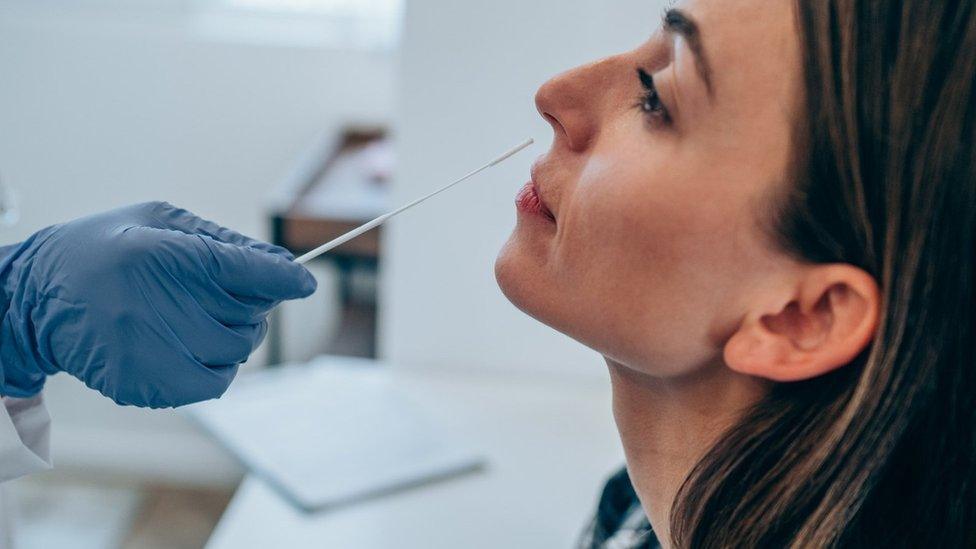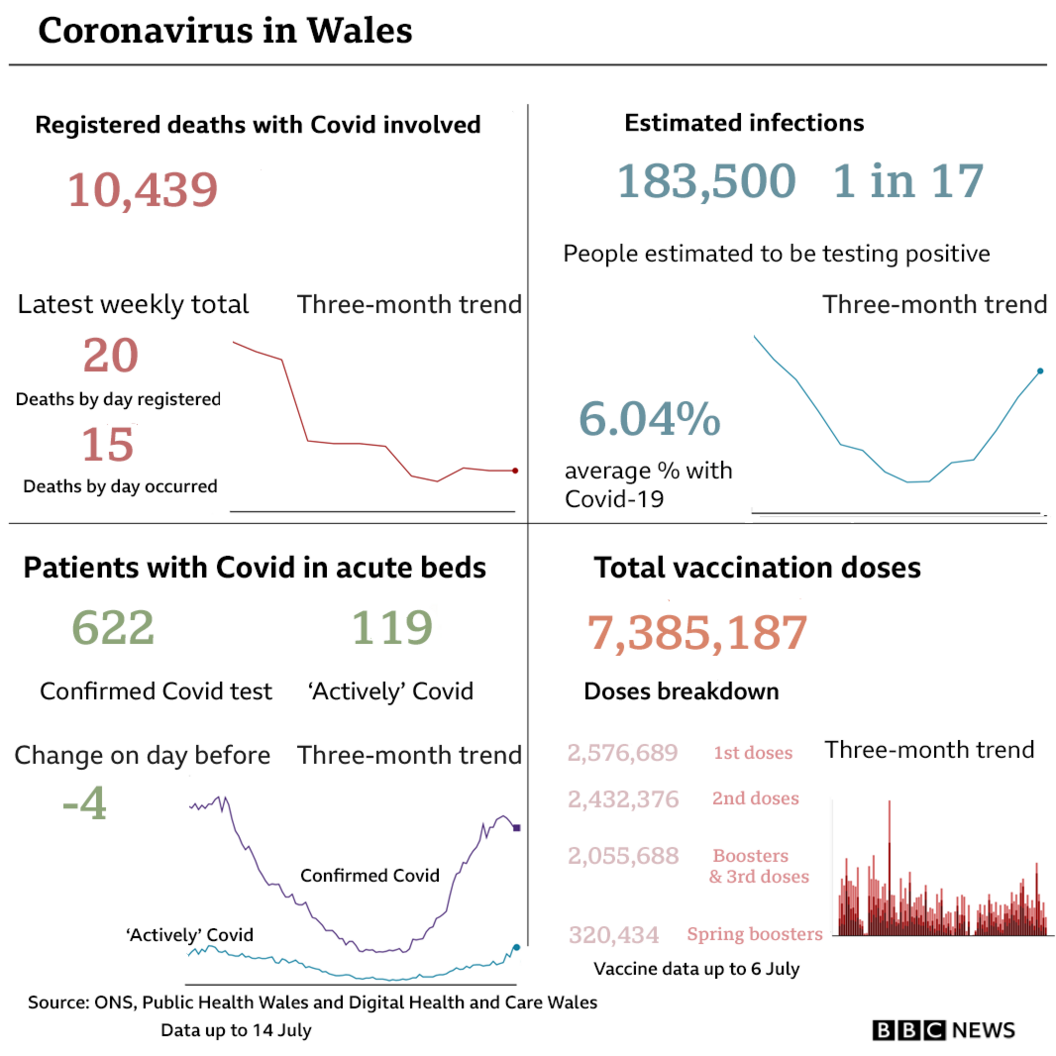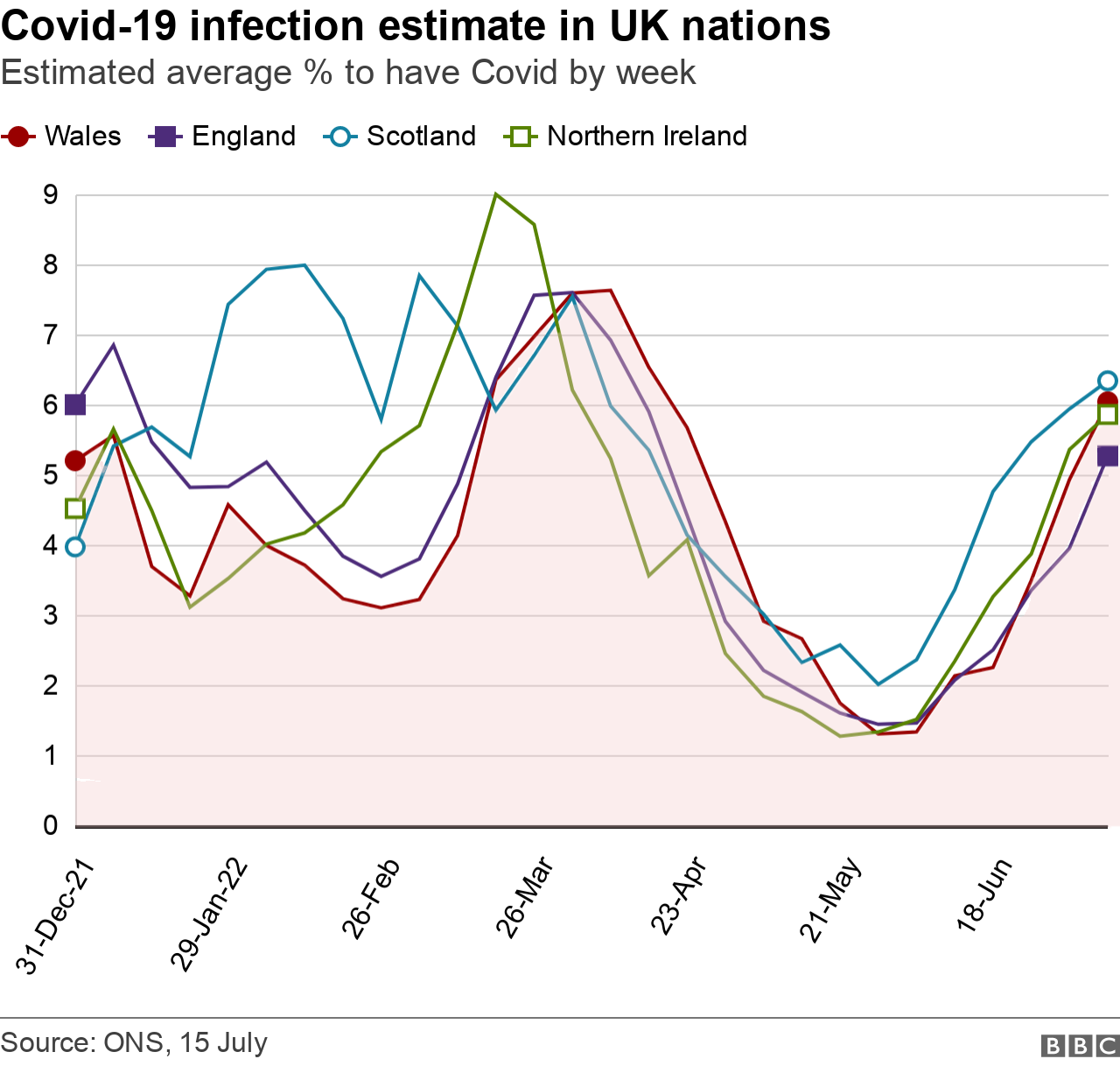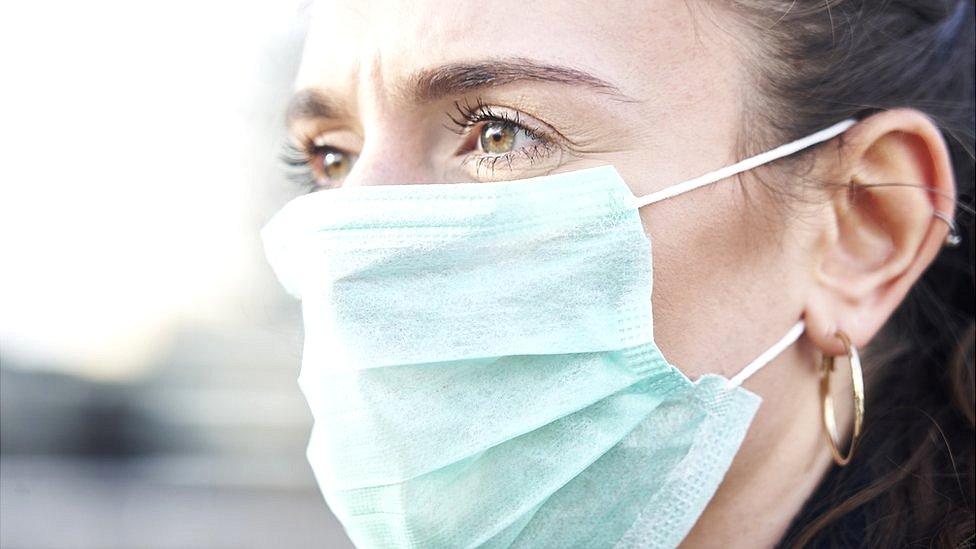Covid: Wales infection levels rise for six weeks in a row
- Published

ONS estimates infections are still rising in Wales in most age groups
Covid-19 infections are still rising, according to latest estimates from the Office for National Statistics (ONS).
An estimated 183,500 people in Wales - or one in 17 people - had Covid in the week ending 6 July, which equates to 6% of the population.
That compares to 149,700 people in the week before and is the highest estimate since mid-April.
The trend has now been rising for six successive weeks.


The number of hospital patients testing positive for Covid is continuing to rise, although there are signs that this increase is slowing down.
There are still high numbers of these patients in hospital to be treated for other conditions - while nearly half have caught Covid while in hospital.
Numbers in critical care or on ventilation with Covid are up slightly on the week but are half the peak in January.
Hospitals continue to be busy - the bed occupancy rate in acute wards has hit a record 94.7% in the last couple of days.
The number of patients testing positive for Covid in hospital beds in Wales has averaged 709 per day over the past week - an 11% rise on a week ago but this increase is starting to slow down, according to Digital Health and Care Wales figures.
These numbers are the highest since late April and are reflecting a recent rise in community infections.
But most - 86% on average - continue to be "incidental" Covid patients, who happen to test positive in hospital but are not actively being treated for the virus.
Only 119 (19%) of confirmed Covid patients in acute beds on 14 July were being primarily treated for the virus, with 503 patients in hospital being treated for other conditions.
Numbers of Covid-positive admissions are averaging 25 a day, which is the highest average since April.
But these still only make up 2.6% of all admissions.
This latest wave was being driven by the BA.4 and BA.5 sub-variants of the Omicron strain, which health officials said was six times more transmissible than the first strain of Covid.
Health officials here expect the current wave to end within the next few weeks but have warned against complacency and said that the virus would continue to evolve.


What is the swab survey?
Since the summer of 2020, the ONS has organised a weekly swab survey involving thousands of households across Wales.
It has become the most important tool to measure the level of infections, with the end of mass testing at the end of March.
Thousands of people in Wales have been tested weekly for nearly two years. From this, ONS is able to estimate the likely level of infection across the community. Similar surveys are carried out in the other UK nations.


Infections are estimated to be lower in Wales than Scotland but higher than in Northern Ireland, England and all its regions.
ONS estimates infections to involve one in 19 people in England, one in 16 in Scotland and one in 17 in Northern Ireland.
Broken down, daily estimates of infection in Wales are highest in people in their early 30s and lowest in older people in their 70s and 80s.

What else have we learned this week?
There were 20 registered deaths involving Covid in Wales, 11 in people aged over 85
NHS Wales sickness absence stands at 7.3% - the highest since early-April - and compares to a usual pre-pandemic figure of about 5%. A total of 1.9% of staff were absent due to Covid-related sickness
School absence for Covid reasons rose slightly in Wales in secondary schools (2.4%) but is well below levels before Easter and in December
There has been a weekly fall in positive lateral flow test results
97.6% of people are estimated to have antibodies as a protection against Covid - either through vaccination or having been infected

- Published15 July 2022

- Published28 May 2024

- Published20 December 2023

- Published2 July 2022